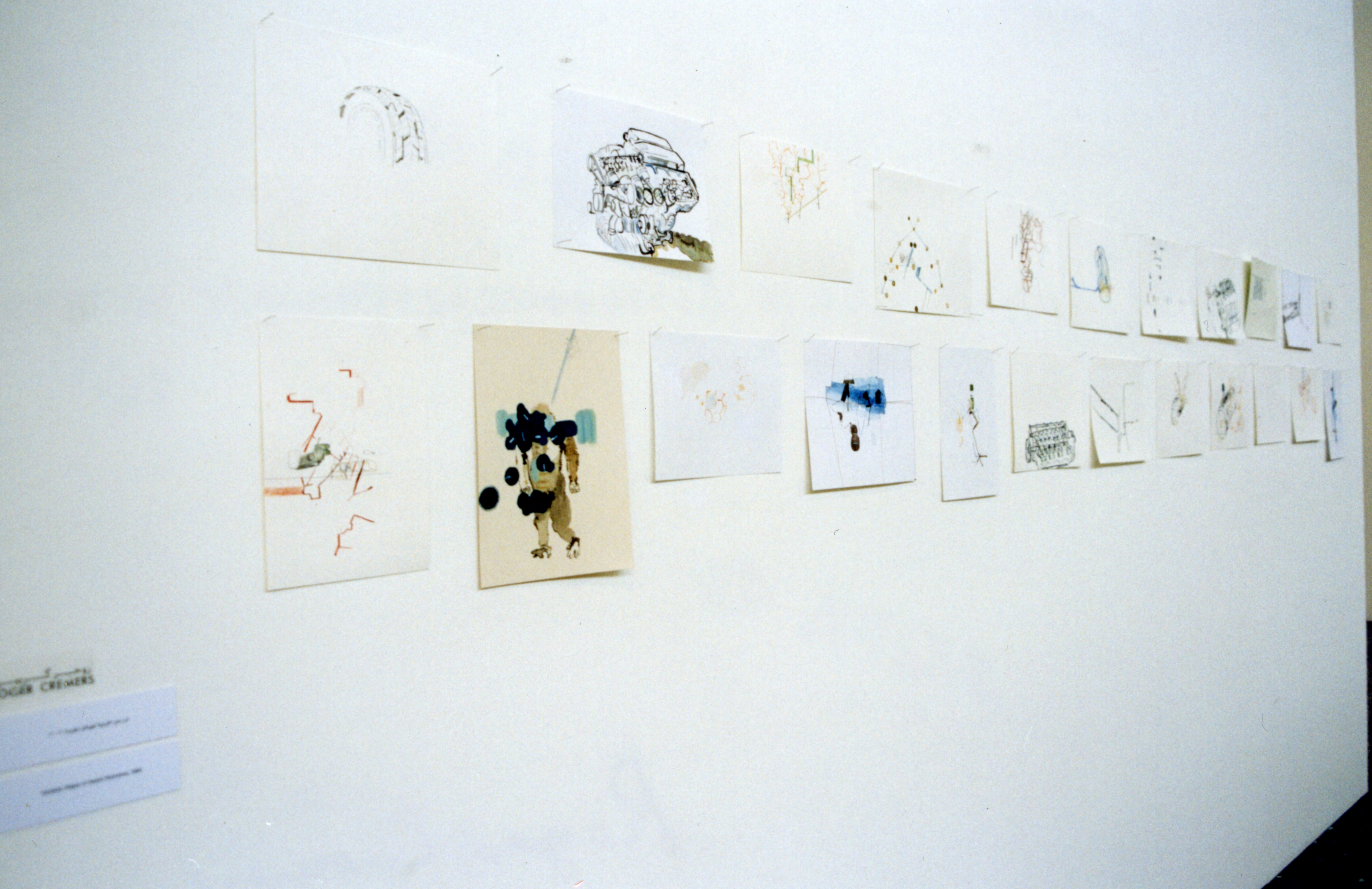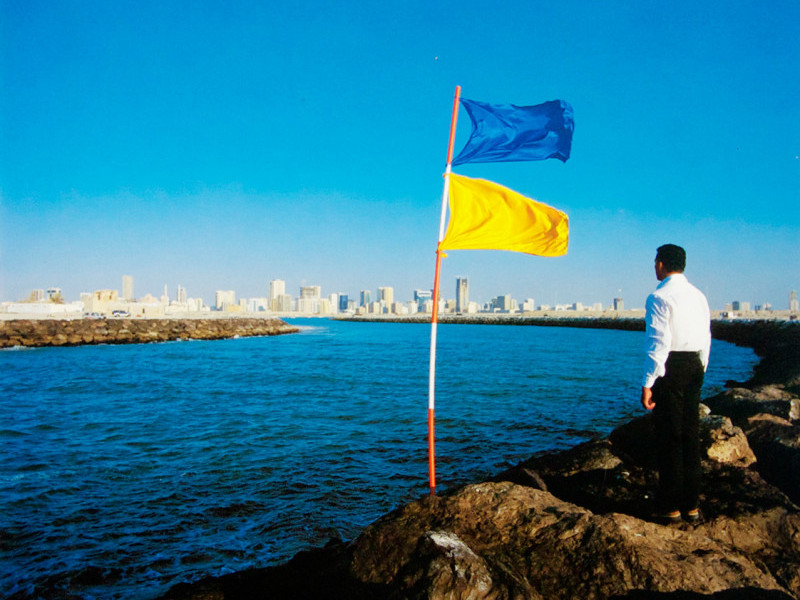
Selected Works, 2002
Roger Cremers
Selected Works, 2002
search


Roger Cremers
Selected Works, 2002
"When shaken by a fever, even Aristotle might act strange", says Narziss in Hermann Hesse's "Narziss und Goldmunc!'. Cremers works are about a sharing concern; the wish to join distinct individuals and their forces.
Looking for a key to understanding the abyss (the diachronic story that informs our predicament) Cremers makes references in his work to advanced technology and the history of science; to decrypt meanings, but the decryption and the connections between them bring up more encryption: what is the reason of this message/meaning? Is it profound, he asks us, In lit ral sense, as 'concrete' evidence, or is the idea of the message "being there" profound in itself? Or is the actual message the profound act of the people meeting and deciding to progress ethically with the work in a dialectical way, or as an over-arching self-identification? An abyss?
As Narziss in Hesse's story finds out, rational solutions are rarely satisfying, always lacking something. Things that carry a profound meaning, even truth, for some are completely obscure for the person who lacks the necessary interpretive keys.
Crerners' art is extremely variegated, but consists mainly of drawings. They are sometimes accompanied by sculptural and/or audiovisual works.
Lately the drawings are made directly on the wall, thus making the space as important as the drawing/painting itself. Different plant forms/medical/scientific imagery lose original significance by coinciding overlapped, and with each other, forming new patterns of generative (latent) meaning. Avoiding the specialist's mono-interpretive way of thinking, working from a peripheral view of reality.
Cremers develops an alchemical/algebraic/mystical serial system of notation which removes (accidentally) without moral sense, the function of both the alchemist and scientist on the way, as too institutionalised to form a truer resistant type. Cremers' re-reading from the writings and representations of science and medicine often concur with the liberation/intellectual ethic of Foucault. Work on the genealogies of madness and sexuality, disturb ideal readings of history especially of the philospher or critic, as an authoritative or hegemonic overseer. The ci~cle of judges, priests, policemen, teachers, doctors - it becomes clear that these inherit the law in very particular ways as institutional beings. This humanist/anti-humanist "circle" also is derisive in the dithyrambic sense of Nietzsche. Cremers marks this intellectual passion as a fever in the archives.
One is reminded of Pierre Klossowski's work, that Foucault himself regarded as having this kind of driven lucidity, "the Vicious Circle" on Nietszche's immersion in delirium, and the prising apart of thought from physiological force.
Cremers often draws beautifully in these traces of physical terrains: arcane maps of disease, an enigma of fate, heterotopias, places of invention, as an antidote to the poisons of moral essentialism and determinism in the academy. Yet fully inside its walls, from the inmate's intellectual thought of distinct individuals and the forces of belief and heresy upon them, comes these transfigured variances-drawings and fragments; objects.

Sharjah Biennial 6